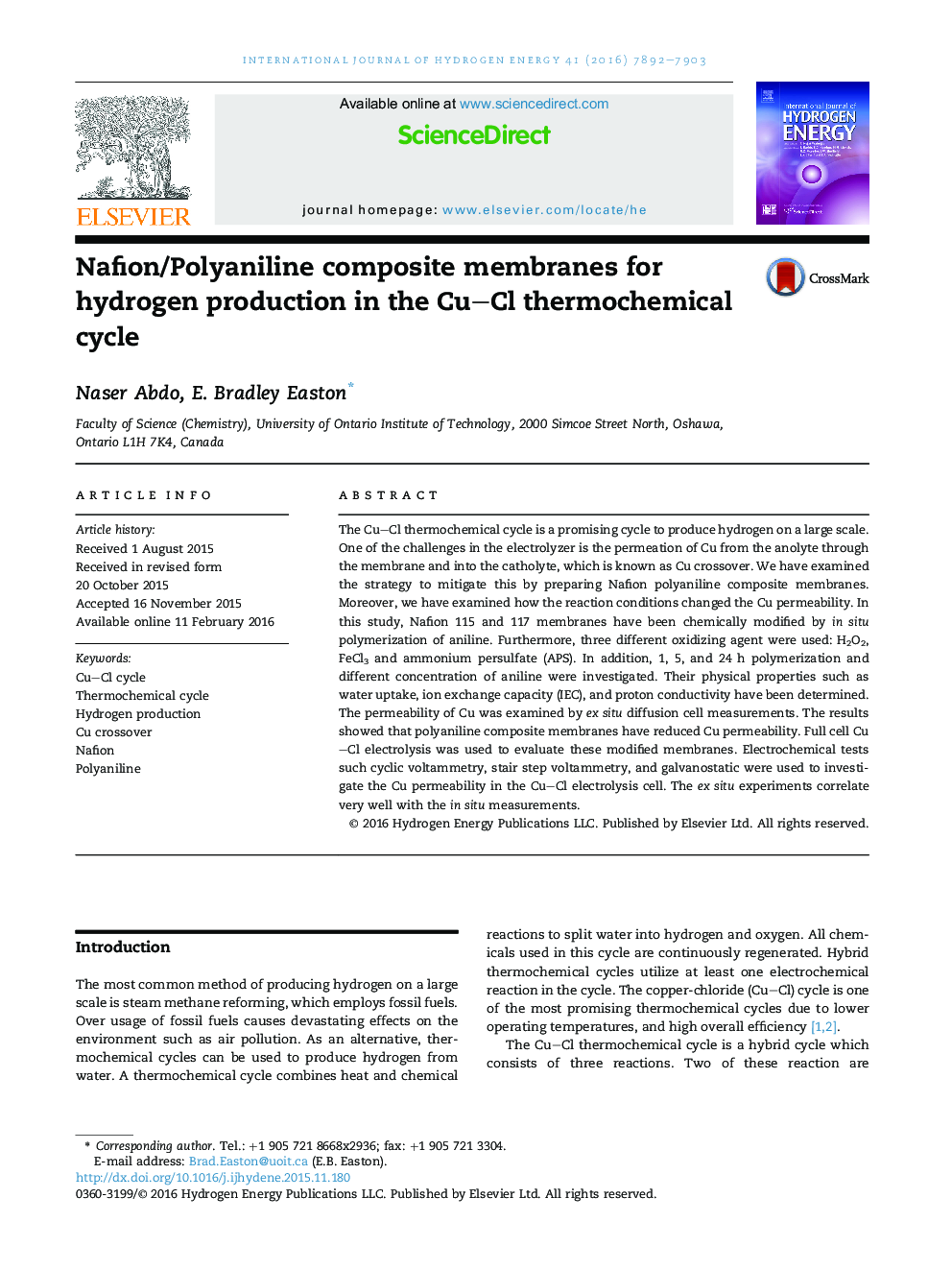| Article ID | Journal | Published Year | Pages | File Type |
|---|---|---|---|---|
| 1277283 | International Journal of Hydrogen Energy | 2016 | 12 Pages |
•Nafion/polyaniline (PANI) composite membranes were prepared by in situ polymerization of aniline.•Nafion/PANI and pristine Nafion membranes were evaluated in a CuCl/HCl electrolyzer.•Nafion/PANI membranes show a lower rate of Cu permeation than pristine Nafion in ex situ testing.•Electrolyzers cells operated with pristine Nafion show large interfacial accumulation of Cu.•Nafion PANI composites showed good performance with minimal interfacial accumulation of Cu.
The Cu–Cl thermochemical cycle is a promising cycle to produce hydrogen on a large scale. One of the challenges in the electrolyzer is the permeation of Cu from the anolyte through the membrane and into the catholyte, which is known as Cu crossover. We have examined the strategy to mitigate this by preparing Nafion polyaniline composite membranes. Moreover, we have examined how the reaction conditions changed the Cu permeability. In this study, Nafion 115 and 117 membranes have been chemically modified by in situ polymerization of aniline. Furthermore, three different oxidizing agent were used: H2O2, FeCl3 and ammonium persulfate (APS). In addition, 1, 5, and 24 h polymerization and different concentration of aniline were investigated. Their physical properties such as water uptake, ion exchange capacity (IEC), and proton conductivity have been determined. The permeability of Cu was examined by ex situ diffusion cell measurements. The results showed that polyaniline composite membranes have reduced Cu permeability. Full cell Cu–Cl electrolysis was used to evaluate these modified membranes. Electrochemical tests such cyclic voltammetry, stair step voltammetry, and galvanostatic were used to investigate the Cu permeability in the Cu–Cl electrolysis cell. The ex situ experiments correlate very well with the in situ measurements.
